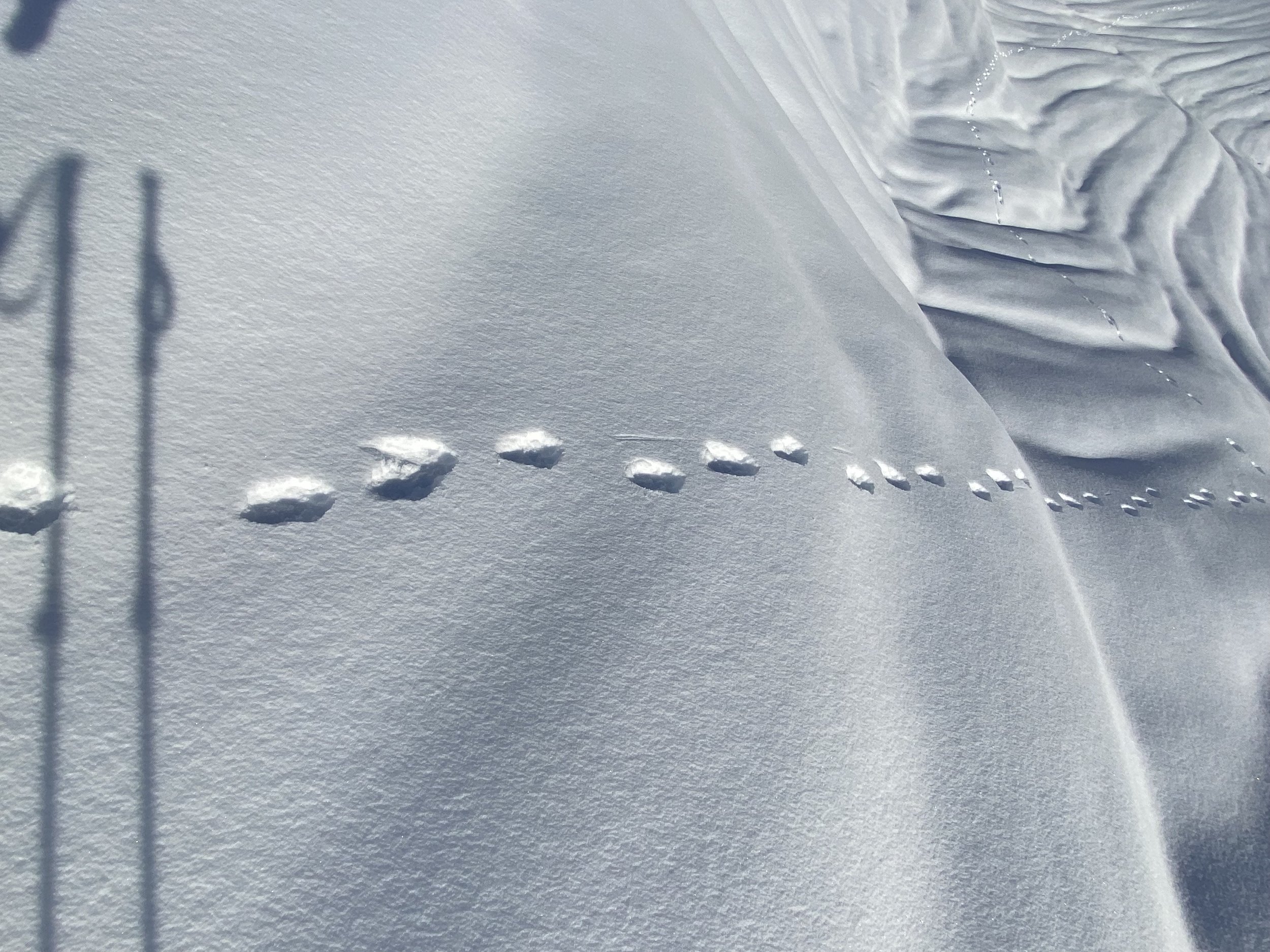Wolverines in a Changing Landscape
Photo: Peter Dunwiddie
During a recent outing on Mount Rainier, an ecologist named Peter Dunwiddie lived the backcountry skier’s dream. He spotted an animal perhaps half a mile from where he stood—a black dot rolling across a snow-white basin. As he watched the dot grow closer and closer, its distinctive features began to take form.
“Smaller than a bear, bigger than just about anything else, and running fast with a peculiar gait that was definitely not canid.”
When Peter emailed me that night, his words still glowed WOLVERINE! The wolverine approached Peter and his friend to within a hundred feet before it noticed the two tall primates stationed ahead and cut a fast, smooth turn in the other direction. Peter’s video below captured the otherworldly encounter so that us mere mortals can view it on-screen.
One only need watch how the wolverine in Peter’s video tackled a steep mountain slope—like I might descend a flight of stairs—to recognize why these rare carnivores are notoriously difficult to study. Unfortunately, they’re also high on the long list of wildlife who are thought to be at risk from climate change, especially given their need for spring snow cover to safely produce their young.
A new article published in Global Ecology and Conservation presents the first global analysis of wolverine ecology and conservation research. Led by University of Victoria’s Jason T. Fisher and co-authored by more than a dozen other wolverine researchers (including me), the article reviews 156 scientific papers and summarizes their findings. The study also highlights what wolverines will need to survive in our changing world.
Snow and solitude.
Connectivity.
Big protected areas.
Bold, science-driven conservation strategies to address climate change and other human threats.
Photo: Peter Dunwiddie
As Fisher puts it in a press release circulated by Yellowstone to Yukon Initiative (Y2Y):
One major takeaway from the last 20 years of research is wolverine research and conservation can’t stop at political borders. There also needs to be better collaboration among researchers, and communication with policymakers, to make better decisions for wolverines. The science shows that we already know a lot—we need to be sharing more and thinking and acting on bigger scales.
Photo: Peter Dunwiddie


